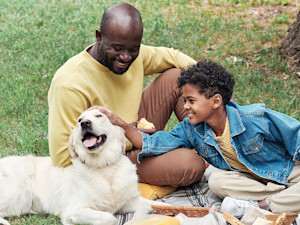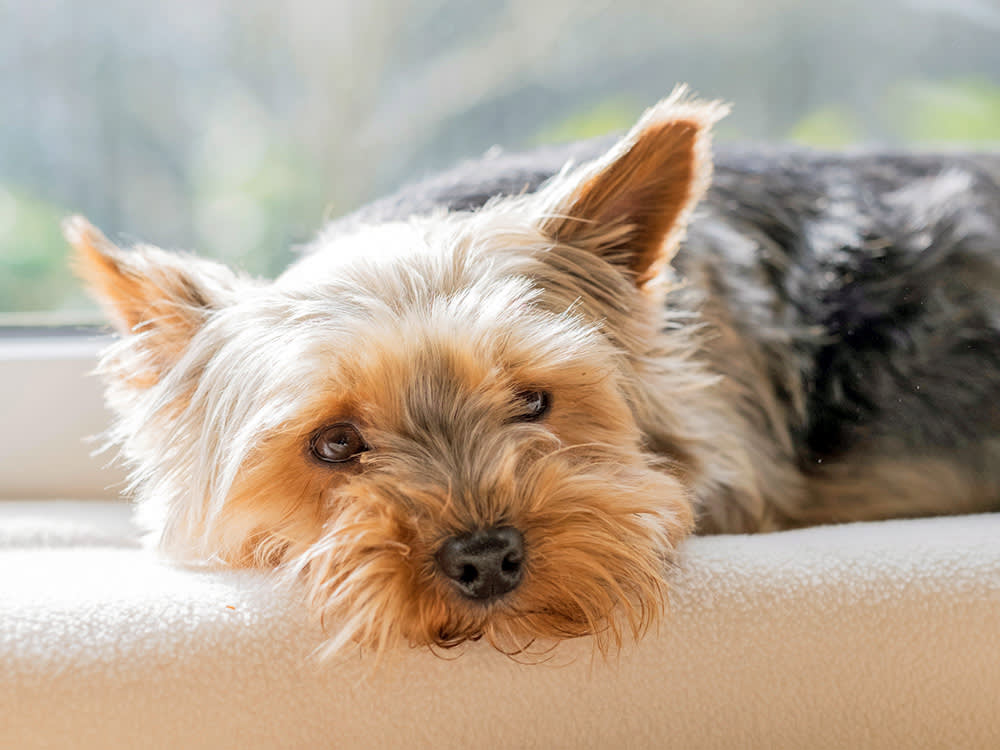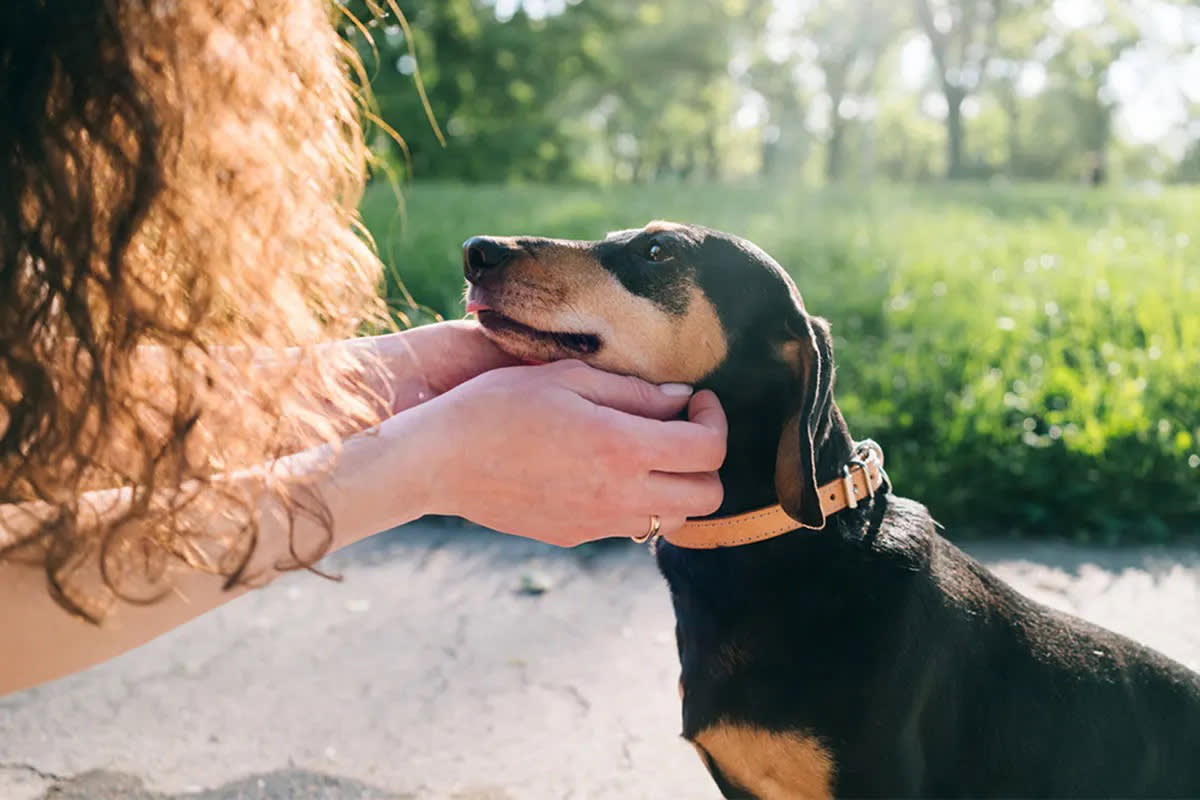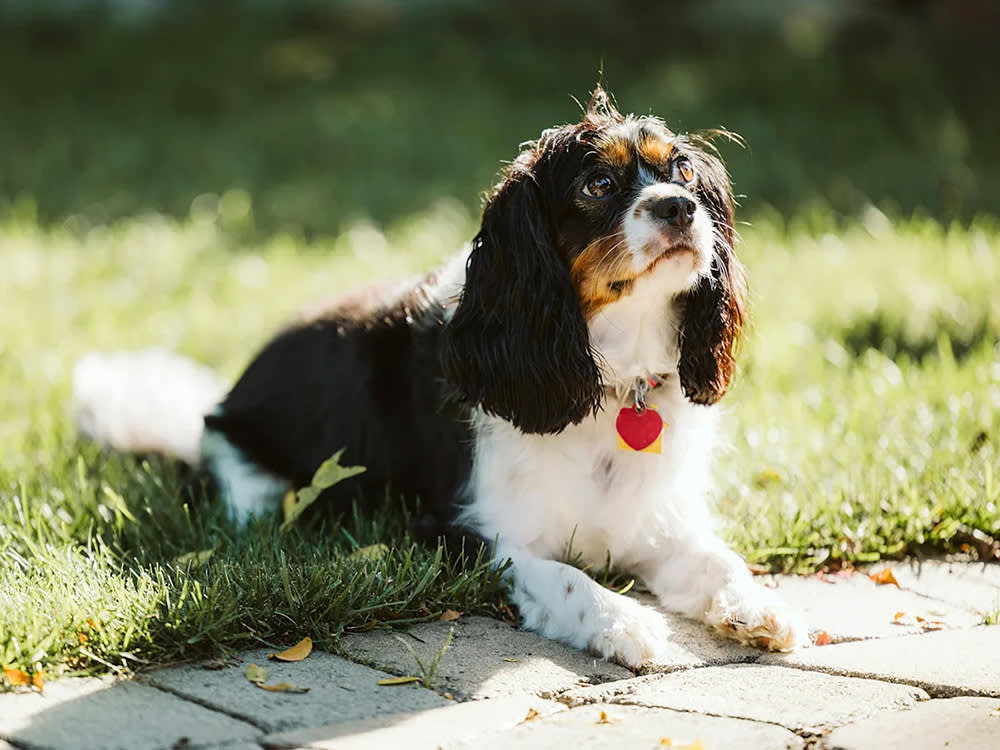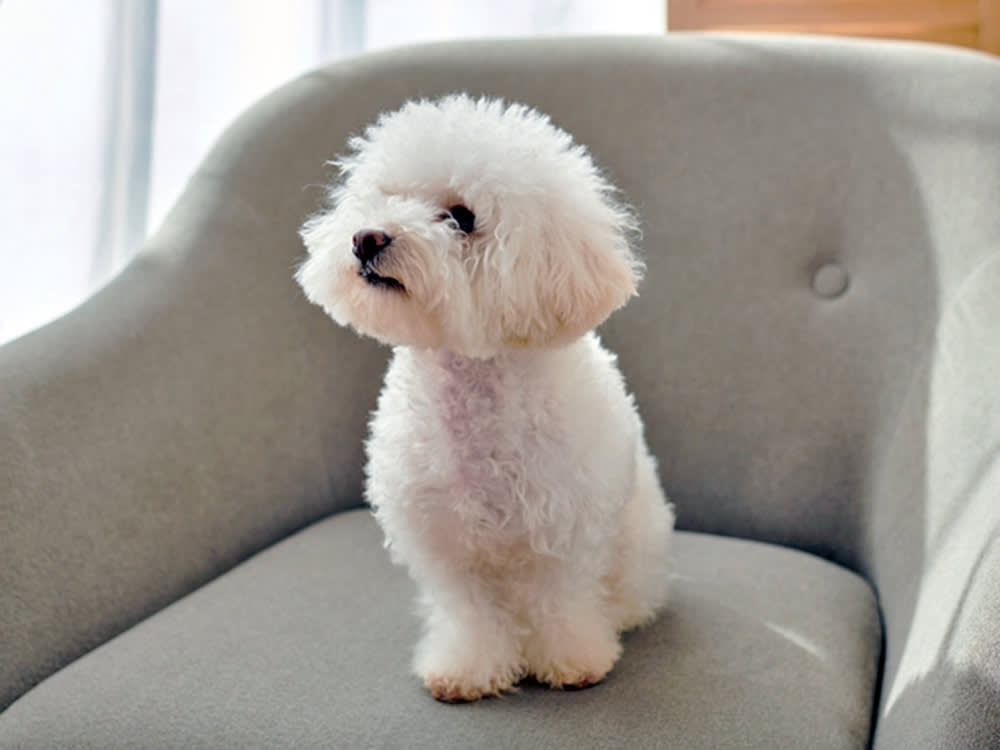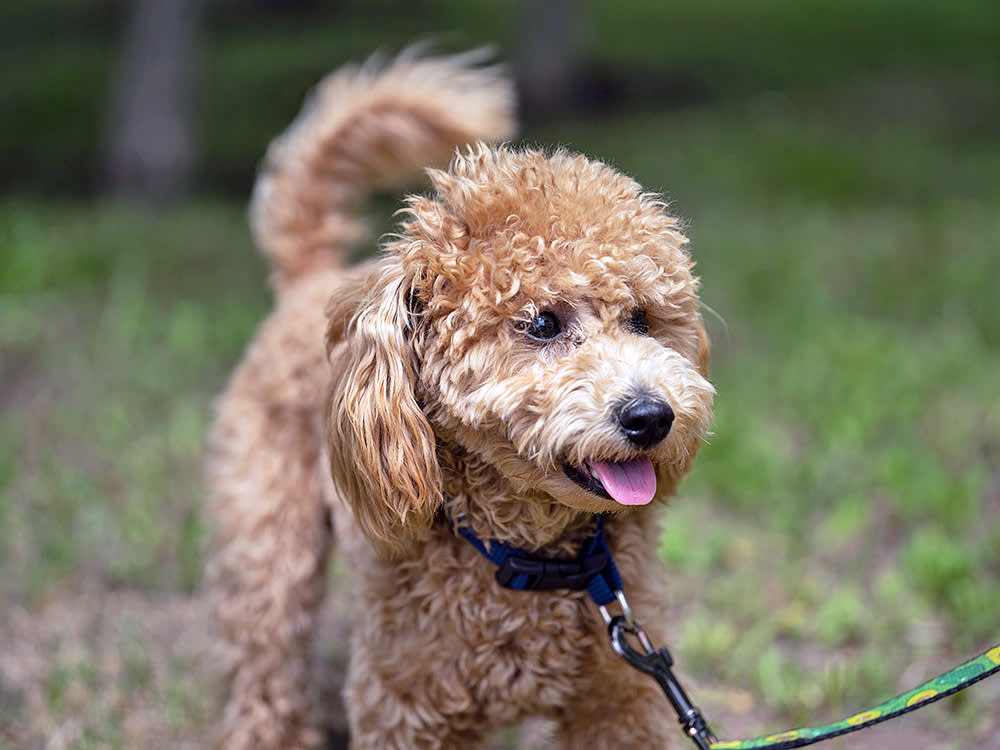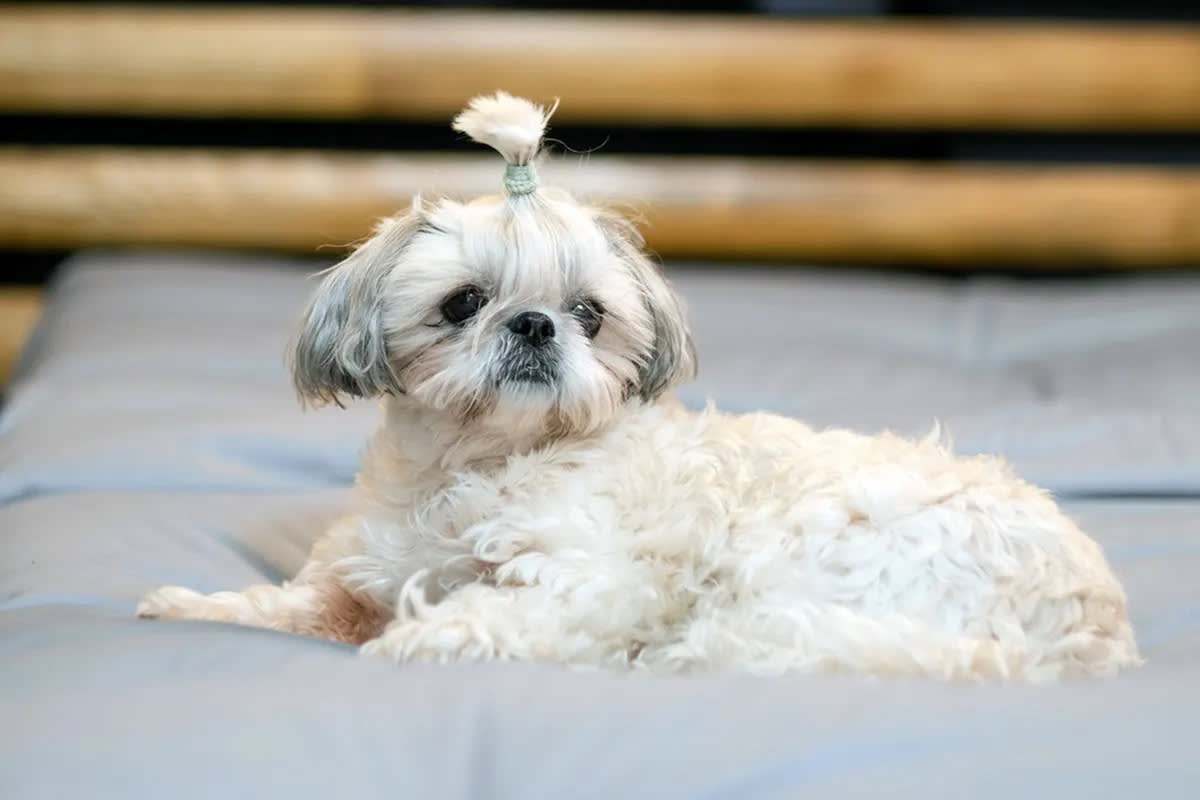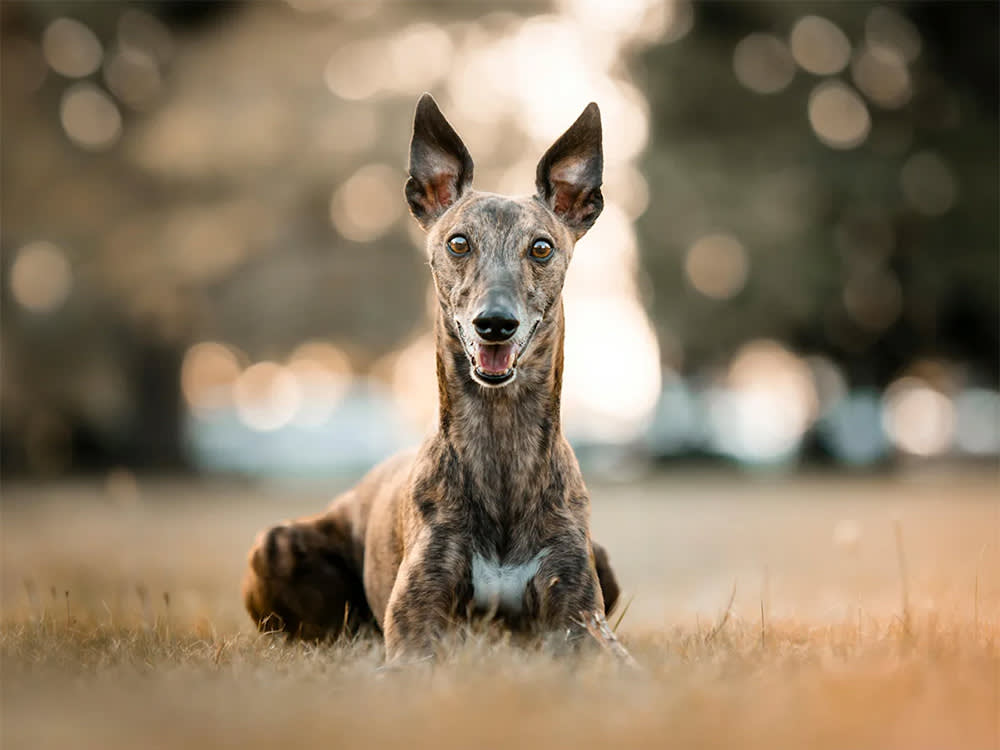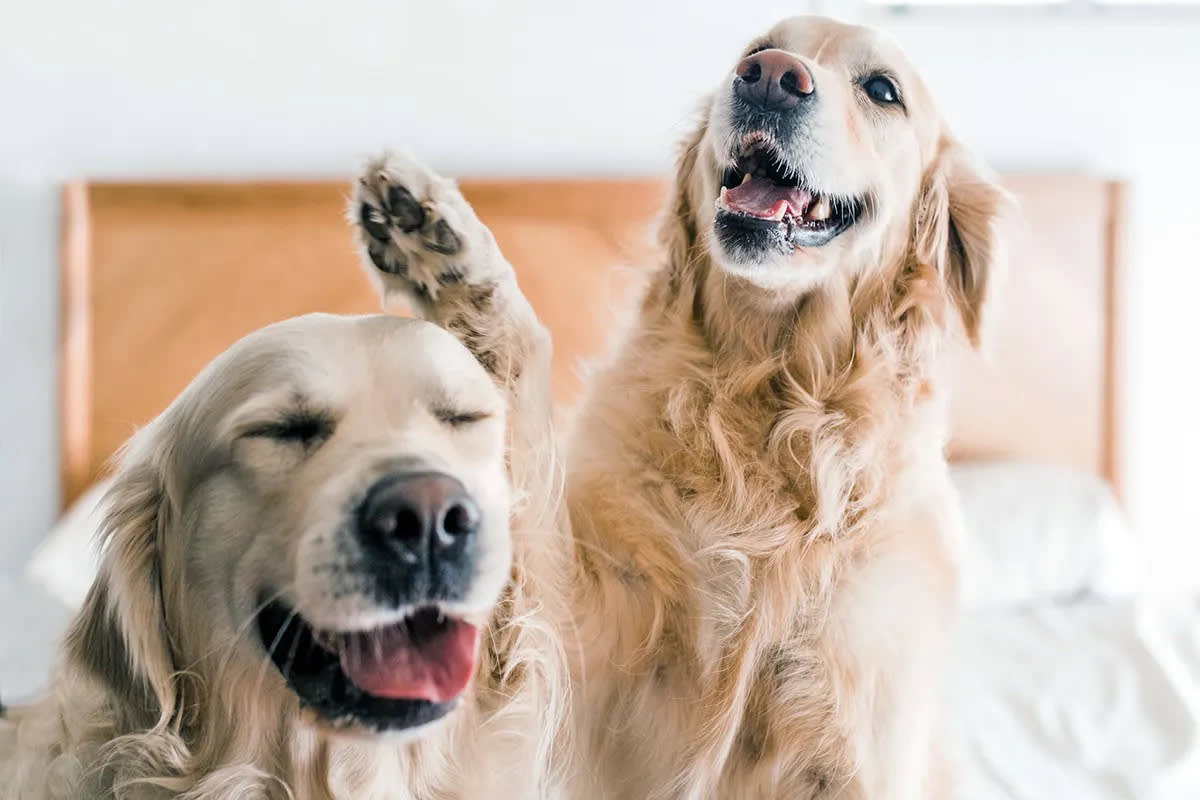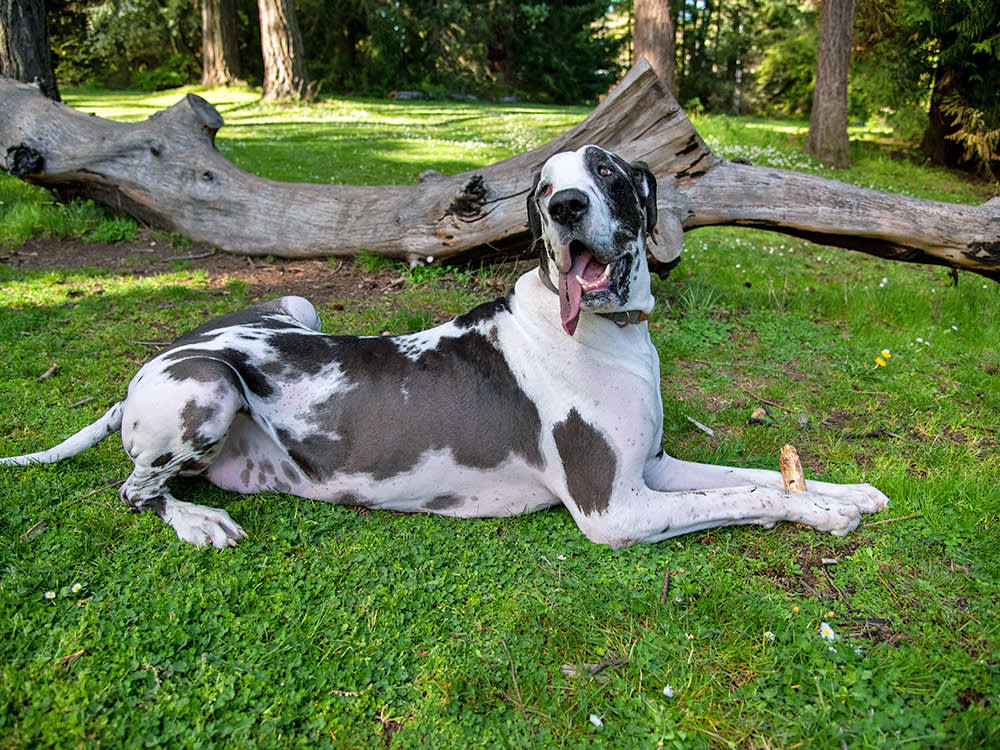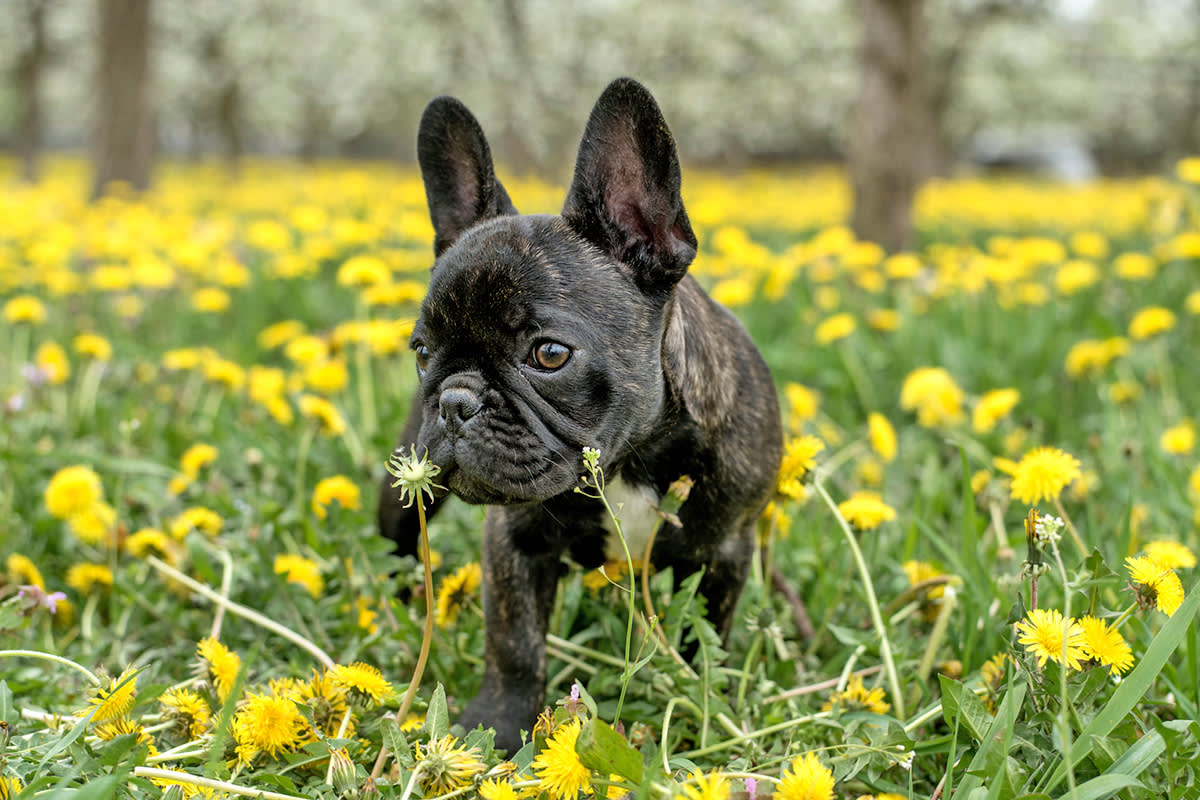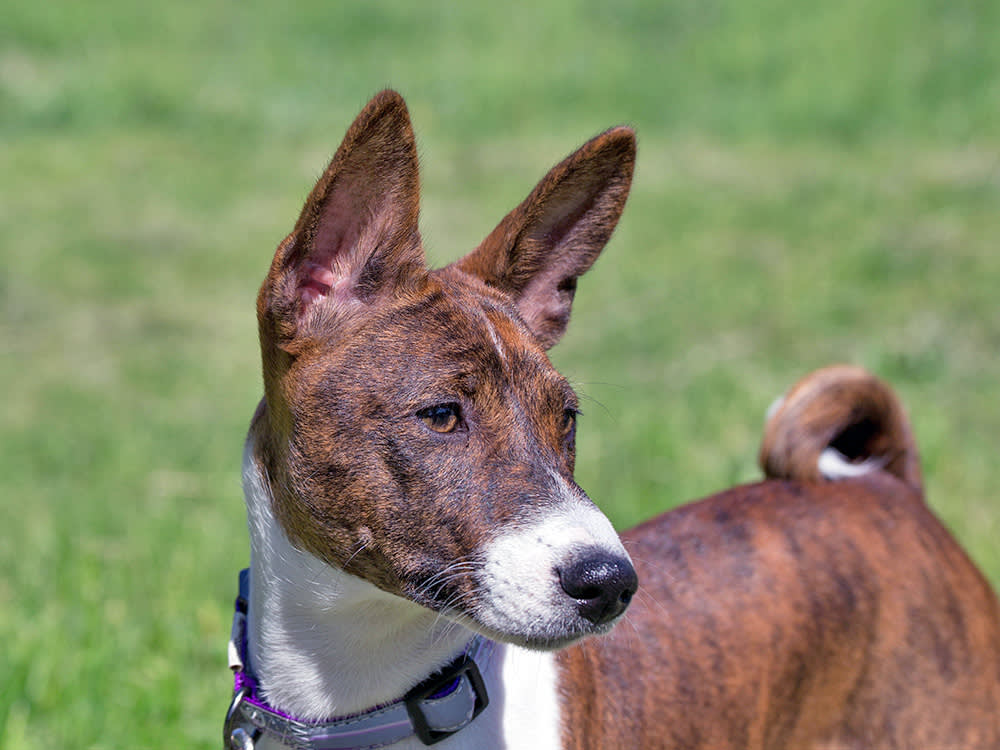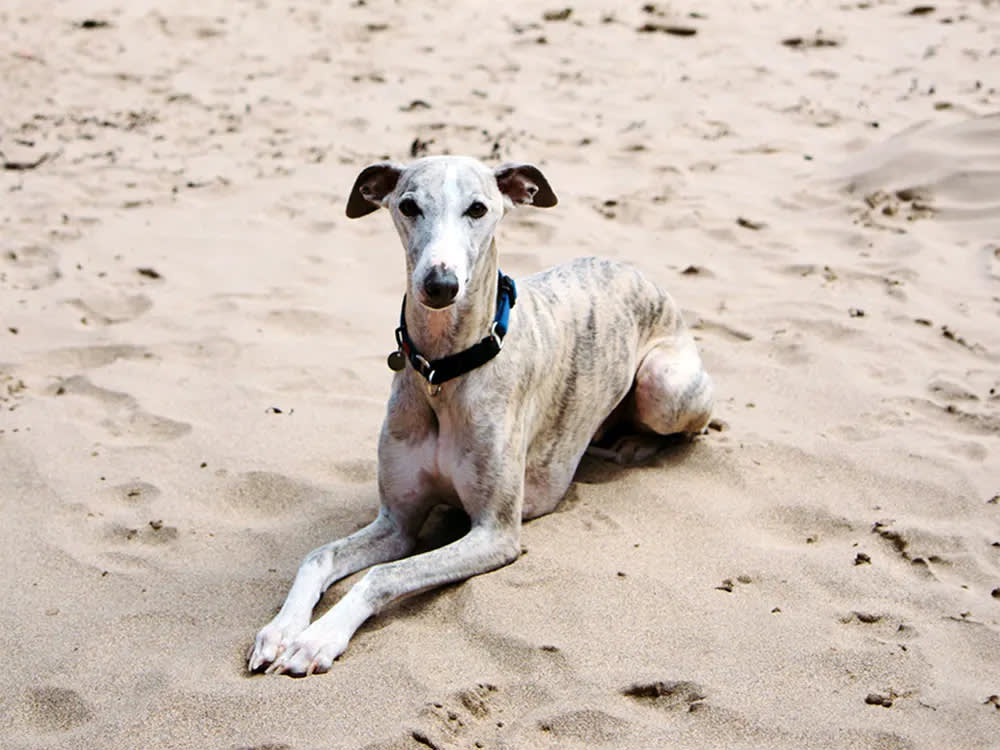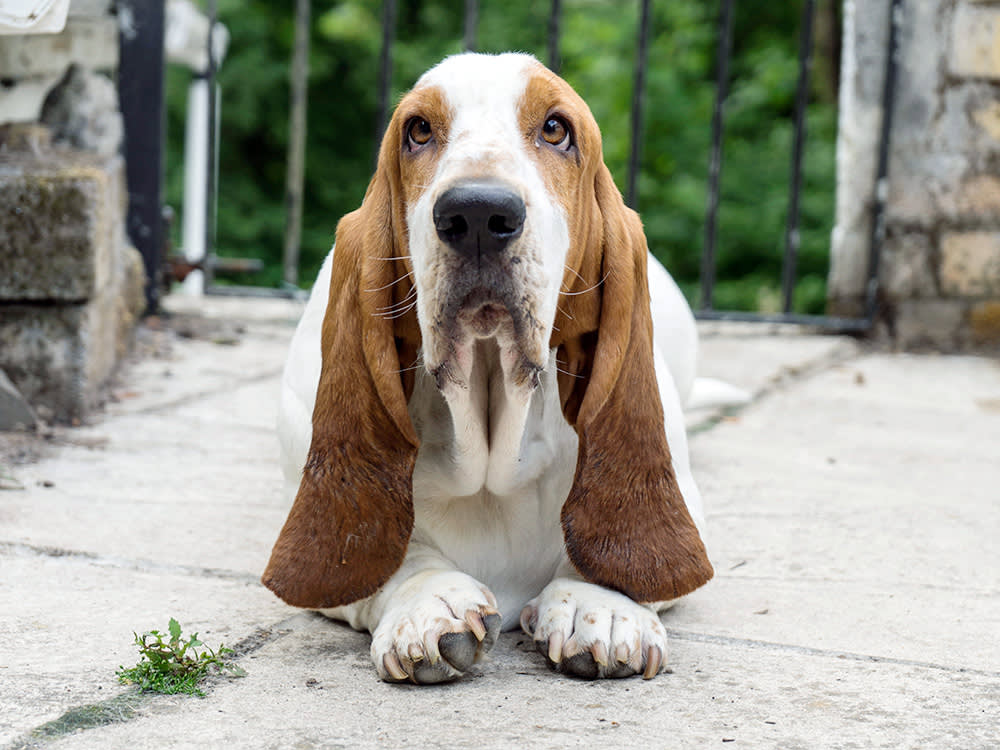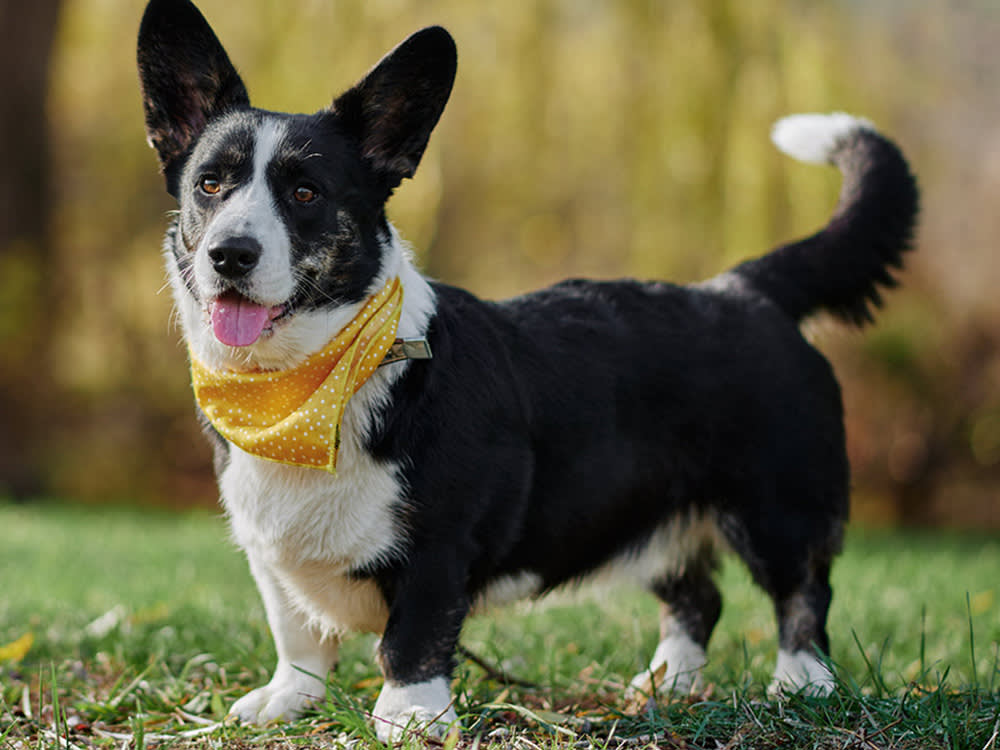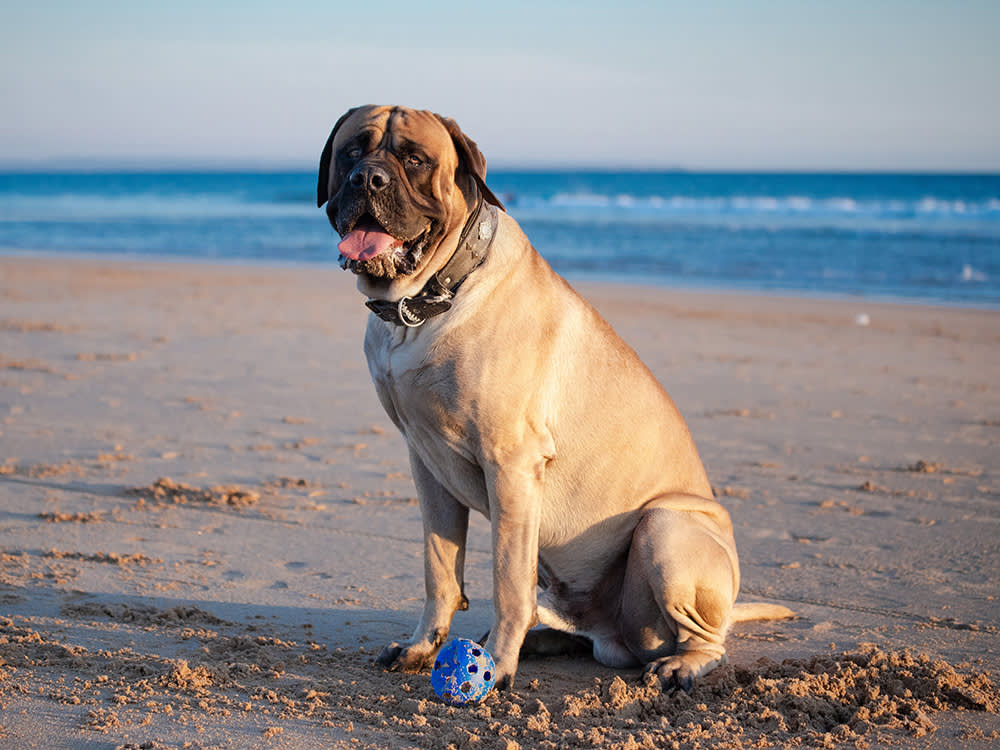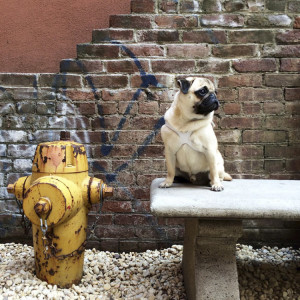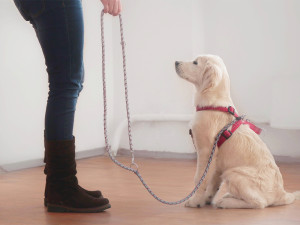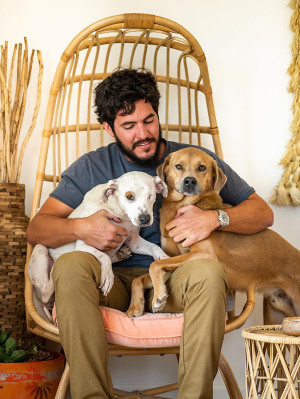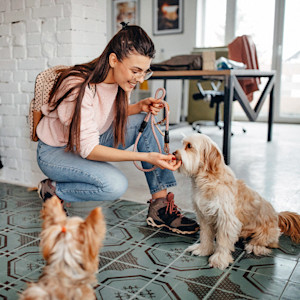Best Apartment Dogs: 17 Breeds That Thrive in Small Spaces
Any of these breeds are great for city living and available at shelters and rescues.
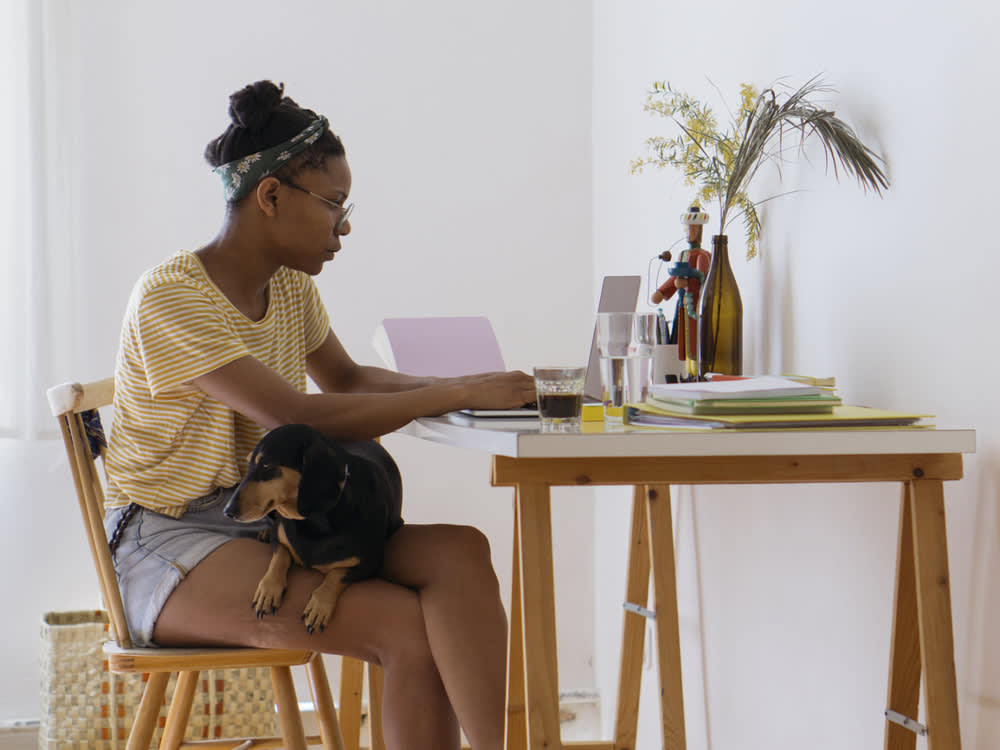
Share Article
In This Article:
Best Small Dogs for Apartments Best Medium and Large Dogs for Apartments
If you live in a city and are researching rescuing and adopting a dog, chances are you have run across the term “apartment breed” to try to find the breed or mix that is right for you.
These are the types of pups who are happy chilling on the couch between walks and can easily maneuver around a one-bedroom or studio. You might think only small dogs are a good fit for apartment life, but that’s not true. Animal behaviorist Renee Rhoadesopens in new tab, founder of R+ Dogsopens in new tab, stresses that many large-breed dogs can adapt to apartment living quite well.
“Any dog can be suited to apartment living as long as the dog guardian is making meeting the dog’s needs a priority,” Rhoades tells us.
As with any dog, there are good things and not-so-good things that prospective pet parents should take into account before making their final decision. To help take the guesswork out of it, we’ve created this guide for the pros and cons of some popular apartment dogs, both large and small (and mixes of those breeds).

Small apartment dog breeds
According to Rhoades, the biggest benefit is the most obvious one: “Having smaller dogs in an apartment setting can sometimes be beneficial as smaller dogs take up less space.”
The hard truth is that smaller dogs can actually make it easier to find an apartment in the first place. Despite a new law banning home insurers from breed discrimination in places like New York, landlords will often deny a rental application based on a dog’s breed or size, with a common weight limit being 25 pounds.
And if your landlord has a no-pets policy, you have a better chance of convincing them to bend the rules if your dog is on the petite side — especially if they are one of those small dog breeds that are calm and easy to train, like (most of) the ones on this list.
Yorkshire terrier
Yorkshire Terriers are an often-recommended apartment breed due to their petite size, tipping the scales at just seven pounds. However, these originally British babes aren’t always perfect roommates. Like Dachshunds, Yorkies can be prone to barking. Unlike Dachshunds, their bark is a much more tolerable yap and therefore less likely to get you a noise complaint. Yorkies are also a good mix of energetic and low-key.
A few quick laps around your one-bedroom and these pups will happily nap on your lap for the rest of the day — and their size means those laps are less likely to bother your downstairs neighbor.
Potty training is the biggest issue with this breed, especially if you have to run down a fifth-floor walk-up before you make it outside. The hard truth is that you might need to invest in some pee pads for these petite pups and their even more petite bladders.
Dachshund
Dachshunds are a good yet sometimes questionable choice for apartment living for only one big, loud reason: barking. Relative to their small size, Dachshunds have a deep, resonant bark — and it’s one they like to employ frequently. Although early training can mitigate this breed instinct, it is unlikely to abolish it altogether. Dachshunds can, however, also make wonderful apartment companions. They are big couch potatoes who are happiest just being around their person (sometimes a little too happy, as they can also be prone to separation anxiety).
They also have one breed instinct that makes them uniquely perfect for apartment living: rodent hunting. Dachshunds were originally bred to hunt badgers and rodents, so they will happily try to catch any mouse your landlord won’t.
Cavalier King Charles Spaniel
You might be wondering, Are there going to be any silent dogs on this list? And the answer is no because there are no completely silent dogs. And we wouldn’t want that anyway; barking is how our pups communicate. However, you will get pretty close with the Cavalier King Charles Spaniel, who are often chosen for their prized sweet and quiet dispositions.
But while these small pups are not big on barking, they do come with other caveats. Cavaliers are very one-person loyal and can, as a result, be prone to separation anxiety. Unlike their counterparts on this list, they aren’t one to bark about it — but your absence will still take a toll on the gentle breed. They also require more exercise than the other breeds here.
Bichon Frisé
These puffball pups can do really well with apartment living — under the right conditions. Bichons are small and light as a feather, usually under 15 pounds. They are also low-energy, and their exercise needs are flexible and minimal. However, like the Yorkie, Bichons are notoriously difficult to potty train. They can also bark a lot, especially when left alone. And while their “hypoallergenic,” minimally shedding coat is perfect for small-space living, they do require more frequent baths and grooming — which can be a pain in a small apartment bathroom.
Mini Doodle
Doodles — the various Poodle mixes including, but not limited to, Goldendoodles, Labradoodles, and Bernedoodles — are easily the most controversial breed of the last twenty years. Mini versions of these pups are especially common in cities filled with apartment dwellers, mostly due to their quickly trainable temperaments and less allergenic coats. However, depending on which breed mix you get, the Doodle energy needs might be more than a few small rooms can handle.
Any working breed mix, such as the mini Aussiedoodle, is going to require frequent access to exercise and large open spaces to maintain a healthy temperament. Additionally, the rapid spike in popularity of these dogs has led to irresponsible breeding, meaning your perfect studio-sized mini-Doodle puppy might end up far less mini once they reach full adulthood.
Please remember you do not have to go to a breeder to find this breed (or any breed). You can find Doodles rescued from backyard breeders who need your love and attention.
Pug
Pugs are among the best apartment companions. They’re not frequent barkers (hmmm, did a Pug write this?), which is a plus for you and your neighbors, but they do tend to shed heavily, requiring a bit more clean-up.
Despite their size, Pugs can be active and need frequent exercise, so make sure to plan plenty of puppy playdates and give them lots of attention. Be aware, as well, that they are a brachycephalic (or flat-faced) breed that struggles to breathe simply because of the shape of their skull.
Shih Tzu
Cuddly and affectionate, Shih Tzus are relatively low-energy, preferring to snuggle on the couch with their favorite person. But don’t take their low-key behavior for introversion — Shih Tzus love to explore and meet new people.
On the smaller side (usually less than 15 pounds), Shih Tzus have a lively temperament that makes them fun companions, but they can be rather vocal, so beware of their barking.
Chihuahua
These tiny dogs have huge personalities — and often loud voices to match. Even though they’re small, Chihuahuas still need plenty of exercise time to get out their energy and are great companions to take with you on the go.
Chihuahuas crave attention and tend to form close bonds with their human parents. To avoid conflicts with other pets, consider adopting a Chihuahua as your only pet and prepare yourself for plenty of barking, their favorite way to express themselves.
Large- and medium-sized apartment dog breeds
If you’re up for the challenge of optimizing your apartment and schedule for a larger dog, Rhoades assures us that big doggos may make for great apartment dwellers.
“Depending on the exercise requirements of the individual dog, many breeds could live great lives as apartment dogs,” she says, “Dogs do not necessarily need backyards in order to have fulfilling lives, but they do need to have guardians who are willing to accommodate their needs.”
In terms of temperament, there’s no shortage of large dog breeds who are chill enough to vibe with small-space living. And while some breeds — cough, cough Great Dane cough cough — might require a, uh, slightly bigger dog bed than, say, a Maltese, their low-key, amicable personalities make them perfect fits for apartment life.
Greyhound
Famous for their controversial history of track-racing, Greyhounds are an elegant breed that can adapt well to apartment living. Many Greyhound pet parents note their ironically lazy temperaments. This is because these dogs were bred to be sprinters, not endurance runners, making their exercise needs incredibly manageable. Of the best medium-sized dogs for apartments, Greyhounds are also generally a very quiet breed and are not prone to heavy barking fits.
All this said, prospective Greyhound parents should keep a few things in mind. One good point to remember is that a rescue Greyhound, who might come from the legal or illegal racing world, might struggle with potty training, as they likely have never lived indoors. Greyhounds can also be sensitive to noise, so those with upstairs neighbors who love to stomp or honking taxis outside the window should take note before adopting. In spite of these issues, Greyhounds are highly trainable and can usually adapt if given enough time and patient training.
Golden Retriever
Golden Retrievers are beloved for both their inner and outer beauty and are known as wonderful family dogs. Highly sociable, a Golden Retriever will likely adapt well to a busy, person- and dog-filled apartment building. Not usually big barkers or noise-reactive, Golden Retrievers also make good neighbors in places with shared walls. There is also no reason to go to a breeder for these dogs; you can find them at a purebred rescue or at a shelter, often as a result of illegal backyard breeding.
However, as their name suggests, Golden Retrievers will need structured exercise time to play fetch or just get out excessive energy. Aside from exercise, the whip-smart breed will also need mental stimulation inside your apartment — so be sure to invest in puzzles and nosework toys.
Great Dane
Ironically the largest breed on this list, Great Danes might be one of the best breeds for apartment living. Low-energy and stunningly gentle, Great Danes can live quite happily in communal, apartment spaces. The breed is also known for their infrequent barking and trainable nature. Of the best large dogs for apartments, Great Danes will likely require more accommodations than other large breeds on this list in order to comfortably adapt to apartment living.
For starters, Great Danes will still need an ample amount of living space in order to stretch their legs and wag their tails without wagging into stuff (seriously, their tails are huge, and their wag is very powerful).
Furthermore, Great Danes are prone to certain health problems that can affect their mobility, such as hip dysplasia, arthritis, and wobbler syndrome. Especially as they age, these conditions can make it hard to navigate the breed, which can reach up to 200 pounds, up and down stairwells and elevators. All this said, Great Danes can live happy, comfortable lives in apartments — but would probably thrive best in a low-floor one-bedroom rather than a walk-up 350-square-foot studio.
French Bulldog
Playful and laid back, French Bulldogs are excellent apartment pets and are often content to relax with their humans. Just like many breeds, however, they need plenty of exercise and mental stimulation to stay happy. A daily 30-minute walk can keep a Frenchie content, and puzzle toys and interactive activities can prevent them from engaging in destructive behavior.
Basenji
Highly intelligent and low-shedding, Basenjis are medium-sized dogs perfect for apartment life. However, their smarts mean they need regular mental stimulation, in addition to plenty of exercise to avoid restless, destructive behaviors.
Whippet
Whippets are high-energy and have big personalities, but they can be great dogs for apartment living, so long as you prioritize their exercise. Highly intelligent and very affectionate, Whippets shed little, rarely bark, and are easily trainable, making them ideal companions for apartment life.
Basset Hound
Basset Hounds are known for their chill temperament, but they can be rather vocal, even if they are low-energy. Because of their short legs, they may not do well with stairs but could be a great option for ground-floor apartment dwellers.
Originally bred as hunting dogs, Basset Hounds love putting their noses to work, so invest in activities that involve their sense of smell. Just be aware that they tend to bark very loudly, especially when left alone.
Welsh Corgi
Their legs may be short, but Welsh Corgis need a lot of exercise, like a long game of fetch. These outgoing dogs love meeting new people and, while not overly vocal, are quick to bark at any possible threat.
Corgis shed quite a bit, but fortunately they’re easy to groom and keep clean. And their adorable personalities make for endless entertainment.
Mastiff
Reaching over 200 pounds, the Mastiff is anything but small; however, these gentle giants can be a surprisingly good fit for apartment living. Quiet and docile, Mastiffs can be standoffish toward strangers but are more than happy to snuggle up with you at the end of the day. Just make sure you have access to dog parks and other areas for exercise and be prepared to deal with frequent shedding and drooling.
Dog apartment-training tips
All apartment dogs, big or small, will require certain training to exist safely and happily in busy, communal spaces. However, beyond training, there are three key factors that can set your dog up for success in an apartment.
Take steps to establish routines.
Dogs thrive with routines — and this goes double for those living in an apartment. A dog who knows when to expect walks, meals and playtime is a happier and calmer dog — and a better neighbor to those in your building.
Having a routine with your pup also allows you to account for certain variables that are common with apartment living — such as busy times in communal spaces or waves of kids going to or from school. Having a sense of these comings and goings and building your dog’s routine around them will help your pup succeed in your apartment.
Optimize the space.
Even in small spaces, pet parents need to ensure they can provide their pup with what they need to succeed in their training.
“It’s important if you welcome a dog into a smaller space that you are able to provide the dog with their own area as well as shared spaces,” Rhoades advises.
This can take the form of anything from a spare room, a crate, or even a bed — as long as your dog views that place as their safe space in the home.
You might also want to consider going the extra mile to be a good neighbor by putting down zoomie-proof rugs or squirrel-blocking curtains. This will ensure your dog is a welcome addition to your community, not a zooming, squirrel barking lunatic.
Prioritize mental and physical stimulation.
“Many dogs, even those who have big houses and yards, are missing out on mental and physical stimulation leading to poor mental health and general welfare,” Rhoades tells us.
Mental and physical stimulation are key to ensuring your dog’s happiness in an apartment. Both these activities should be built into your dog’s routine and can include trips to the dog park, outside games, and inside puzzle or nosework toys. Most importantly, it requires built-in time for you to engage with your pup on their level — not just when you aren’t on a Zoom call.
Finally, even if you feel you can meet all these needs as a pet parent, it’s important to assess if your dog or prospective dog can handle the realities of apartment living.
“Something that we may not always consider when looking at dogs living in apartments is the experience for the dog in relation to other dogs in the immediate area,” Rhoades cautions. “Dogs can start to become sensitive to hearing other dogs bark or seeing dogs or people outside of their windows passing by. There can also be some concerns about dogs in elevators or stairwells, especially considering when the dog gets older or interacting with other dogs in the building.”
Pet parents and prospective pet parents will need to take these factors into account when considering apartment living with their pets. The breeds on this list were chosen because of the commonly exhibited traits and behaviors associated with their breed that make them suitable for apartment living. These breeds are, on the whole, easy to house train, calm tempered, and not prone to barking — making them ideal choices when living in an apartment.
FAQs
What are the best apartment dogs?
When deciding which dog is right for your family, there are a lot of factors to consider. Your home, climate, and the overall personality of you and your family will be the key variables to finding your perfect pup.
What is the quietest dog for an apartment?
While breed standards can only tell you so much when it comes to barking tendencies — breeds like Cavalier King Charles, Great Danes, and Greyhounds are known to be on the quieter side.
How do I train my dog to live in an apartment?
When it comes to apartment living, the pup parent might need more training than the pup. This is because a lot of apartment living with pets comes down to etiquette on the part of the human.
Even if you can control or guide your dog, you will not be able to do the same with the many people and variables that exist in the communal space around you. Avoiding or being cautious with your dog in common areas that might have young children or other non-predictable dogs is a good start — along with investing in a heavy, sound-muffling rug for t hose morning zoomies.
References
Plonsky, Mark. “Basic Dog Training Concepts.” www4.Uwsp.edu, www4.uwsp.edu/psych/dog/la/drp12.htmopens in new tab.
“Training Tips for Dogs.” VMBS News, 21 Nov. 2012, vetmed.tamu.edu/news/pet-talk/training-tips-for-dogs/opens in new tab. Accessed 18 Aug. 2025.
Vieira de Castro, Ana Catarina, et al. “Improving Dog Training Methods: Efficacy and Efficiency of Reward and Mixed Training Methods.” PLOS ONE, vol. 16, no. 2, 19 Feb. 2021, p. E0247321, www.ncbi.nlm.nih.gov/pmc/articles/PMC7895348/opens in new tab.

Rebecca Caplan
Rebecca Caplan is a writer based in Brooklyn whose work has been featured in The New Yorker, Reductress, and Vulture. She lives in Brooklyn with her perfect, toothless dog Moose.
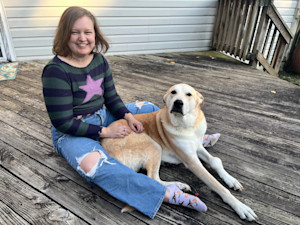
Savannah Admire
Savannah Admire is a writer and pet mom to two dogs and a cat. Under the name Savannah Cooper, she has published poetry in 40 different publications, as well as a poetry book, Mother Viper (2025). When she’s not writing, you can find her reading, taking photos, or volunteering as a content creator for her local community theatre. As a pets writer, she focuses on cat and dog behavior and pet parenthood. She currently lives in Western Maryland.
Related articles
![A pug sitting on a bench outside next to a fire hydrant.]()
6 Private Dog Parks for NYC’s Slobbery Social Elite
New York’s hottest clubs are members-only dog runs.
![Dog Looking Away Against Sky]()
Do Hypoallergenic Dogs Really Exist?
Veterinarian Dr. Shea Cox separates fact from fiction when it comes to low-shedding breeds.
![a dog held on a leash sits calmly]()
Dogs Who Are Easy to Train: Top 10 Easiest Dogs to Train
Spoiler: It’s not about the breed. But these pups are pretty brainy.
![collage of NYC dog friendly places]()
The Dog-Friendly New York City Guide for Your Favorite City Slicker
Whether you’re brunching, barhopping, or looking for a place to crash in NYC, your dog deserves to come with you.
![Henry holding two mixed breed dogs in his lap with his arms around them, while sitting in a wicker chair]()
Downsize It: How to Live in Small Spaces With Pets
Whether you’re stuck in a tiny apartment or living on the road, @KeepingFinn’s Henry Friedman offers tips to not only endure—but thrive.
![Woman getting her puppy ready for a walk at home.]()
How to Potty Train a Puppy in an Apartment
By sticking to a schedule, you’ll find it’s very doable.
